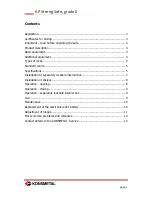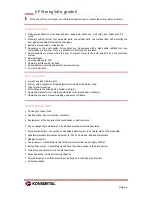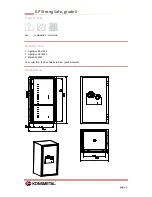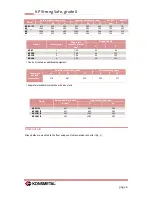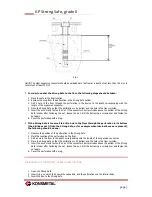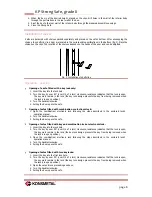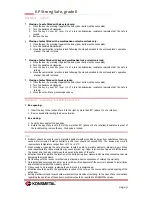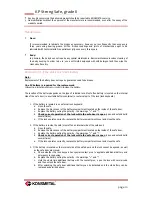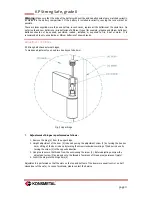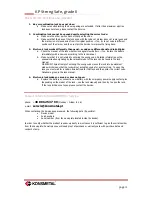
page 10
KP Strong Safe, grade II
Any doubts concerning the delivered product should be reported to KONSMETAL service.
No modifications without the approval of the manufacturer are recommended, even after the expiry of the
warranty period.
Maintenance
Door:
It is recommended to lubricate the hinges as necessary, however, no less frequently than once every
three years using bearing grease. All the friction couplings and joints of mechanisms ought to be
lubricated with technical acid-free petroleum jelly once every three years.
Body:
In principle, the body does not require any special maintenance. Basic maintenance involves cleaning of
the body housing. In order to do so, use a soft cloth dampened with mild detergent and then wipe the
cleaned surface dry.
Replacement of the electronic lock’s battery
Note:
Replacement of the battery does not require guarantee seals to be broken.
One 9V battery is required for the replacement.
Follow the instructions below in order to replace the battery.
The location of the battery depends on the type of installed lock. Most often battery is located on the internal
side of the safe door (in a suitable battery container) or external part of the lock (lock keyboard).
1.
If the battery is located in an external lock keyboard:
a.
Open the safe.
b.
Remove the black cover of the battery compartment located on the inside of the safe door.
c.
Replace the battery noting the polarity - the markings "+" and "-".
d.
Check correct operation of the lock while the safe door is open
(open and extend bolts
several times).
e.
If the lock operates correctly, replace the battery compartment cover and close the safe.
2.
If the battery is inside the safe (most often on internal side of the safe door):
a.
Open the safe.
b.
Remove the black cover of the battery compartment located on the inside of the safe door.
c.
Replace the battery noting the polarity - the markings "+" and "-".
d.
Check correct operation of the lock while the safe door is open
(open and extend bolts
several times).
e.
If the lock operates correctly, replace the battery compartment cover and close the safe.
3.
If the battery is located on the internal side of the safe door and the lock cannot be opened, as well
as the safe door are closed:
a.
Check whether the lock keypad has special contact pins to applicate additional battery and
emergency lock opening.
b.
Replace the battery noting the polarity - the markings "+" and "-".
c.
Hold the whole time additional battery with the contact pins, open the lock with normal code
and then unlock the safe door.
d.
After unlocking the safe door additional battery can be detached and the old battery can be
replaced as described above.


